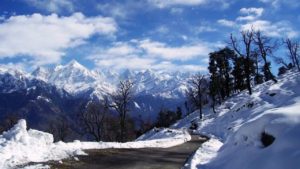
So when the rains triggered a massive flood in Rainy in early February, there was panic among the villagers and rumors started flying that the devices had “exploded”, causing the floods. The reason for the floods in Uttarakhand was a piece of broken glacier . More than 50 people died in this incident.
But if you say this to the people of Raini village with 250 families, many people will not trust you.
Rainy chief Sangram Singh Rawat told me, “We think something must have happened because of the device. How can a glacier break like this in cold weather? We think the government should investigate and find the device.”
Behind their fears lies an interesting story of espionage, featuring some of the world’s top climbers, radioactive material to run espionage systems, and spies.
This story is about how the US, along with India in the 1960s,
Installed nuclear-powered monitoring devices in the Himalayas to spy on China’s nuclear tests and missile firing. China conducted its first nuclear test in 1964.
“The fear associated with the Cold War was at its peak. There was no concrete plan, no major investment,” says Pete Takeda, the Contributing Editor of Rock and Ice Magazine of America, who has written extensively on the subject Uttarakhand.
In October 1965, a group of Indian and American climbers came out carrying seven plutonium capsules and surveillance equipment, weighing around 57 kg (125 lb).
They were to be placed on the summit of Nanda Devi, 7,816 meters high. Nanda Devi is the second highest peak in India and is close to the north-eastern border of India bordering China.
But due to a blizzard, climbers had to return before reaching the peak. When he ran downstairs, he left the device there,
which had a six-foot tall antenna, two radio communication sets, a power pack and a plutonium capsule.
A magazine reported that they had left these things in a rock crack on the mountainside, these cracks were covered above, where strong winds could not come. “We had to come down. Otherwise many climbers would have been killed,” says Manmohan Singh Kohli, a well-known mountaineer who led the Indian team and worked for the main border patrol organization.
When the climbers returned to the mountain in search of the device the next spring to take it to the top again, they had disappeared Uttarakhand.
What happened to the devices ?
After more than 50 years and many search operations on Nanda Devi till date no one knows what happened to those capsules.
Takeda writes, “The lost plutonium may have been inside a glacier by now , it may have become dusty dust , drifted away with the Ganges water.”
Scientists say that this is an exaggeration. Plutonium is the main item used in atomic bombs. But the battery of plutonium contains a different type of isotope (a kind of chemical substance), which is called plutonium-238. Whose half-life (half the time it takes for radioactive isotopes to melt) is 88 years.
What is left is the interesting stories of the campaign team.
In his book Nanda Devi: A Journey to the Last Century, British travel writer Hugh Thompson describes how American climbers were told to use Indian suntan lotion to darken the skin so that the locals could not get any power.
No, And how climbers were asked to show that they are on a “high altitude program” to study the effects of low oxygen on their bodies in Uttarakhand. The people who were taken along to pick up the luggage were told that it is “some kind of treasure, possibly gold”.
An American magazine Outside reported that earlier, climbers were taken to Harvey Points for a crash course of “nuclear espionage”, a CIA base in North Courtaulina.
A mountaineer told the magazine that “after some time we started spending most of our time playing volleyball and drinking.”














































